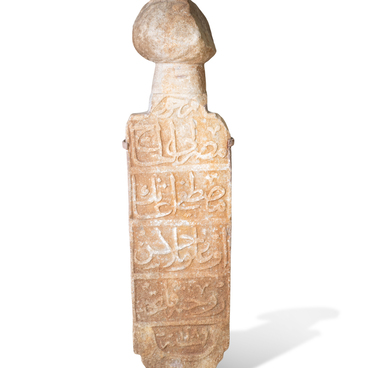The carved marble slab, presented in the museum collection, was once part of the architectural decoration of the lost Christian basilica of the early Middle Ages, found by archaeologists on the lands of the Yuzhniye Kultury sovkhoz (state-owned farm) in the Imereti Lowlands of the Adler district of Sochi.
According to archaeologists, the church was part of a small medieval settlement. Apart from the ruined basilica, there was also a burial ground, foundation of two buildings, remains of a tower and two wells. The settlement was located in a picturesque place at a distance of about 800–1000 meters from the seashore. The architectural monument gradually deteriorated over time; the process was accelerated with the beginning of economic development of the territory.
In the early 20th century, the lands around the church belonged to General Daniil Vasilyevich Drachevsky. In 1910–1911, on his initiative, a unique subtropical park was formed in his estate called Sluchainoye. Subsequently, the territory was transferred to the Yuzhniye Kultury state farm. The remains of the walls and the foundation of the church were finally destroyed during the economic development of the Imereti Lowlands from 1952 to 1957. Scientists only had the chance to partially study the remains of the church when the construction of greenhouses began on this site. The finds discovered on the territory of the monument were given to the museum.
The slab is made of white imported marble and features a longitudinal chip running along its center. It is processed on both sides: on the front, there is a rhombic pattern with an equal-armed cross in the center. On the back, there are two crosses, and one of them is enclosed in a circle. The slab exhibits a traditional pattern, characteristic of early Byzantine architecture. The slab must have been used as a decoration for the altar of the church. The slabs from the Yuzhniye Kultury sovkhoz church were studied at different times by several scientists, who agreed on the dating. For example, the archaeologist and art historian Lyudmila Khrushkova dated them to the 5th–6th centuries CE and cited analogs in the architectural decoration of churches found over a wide distribution area.


